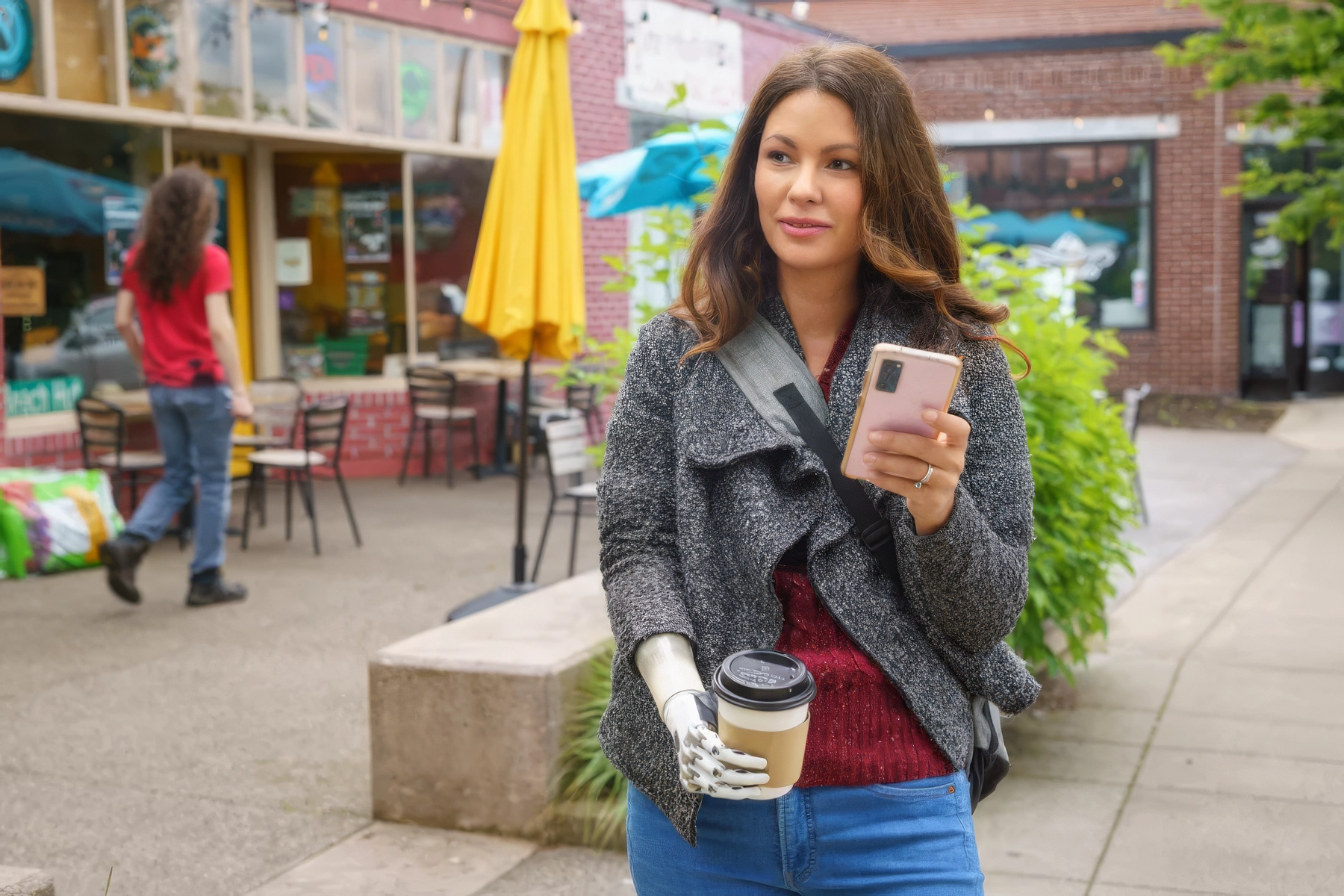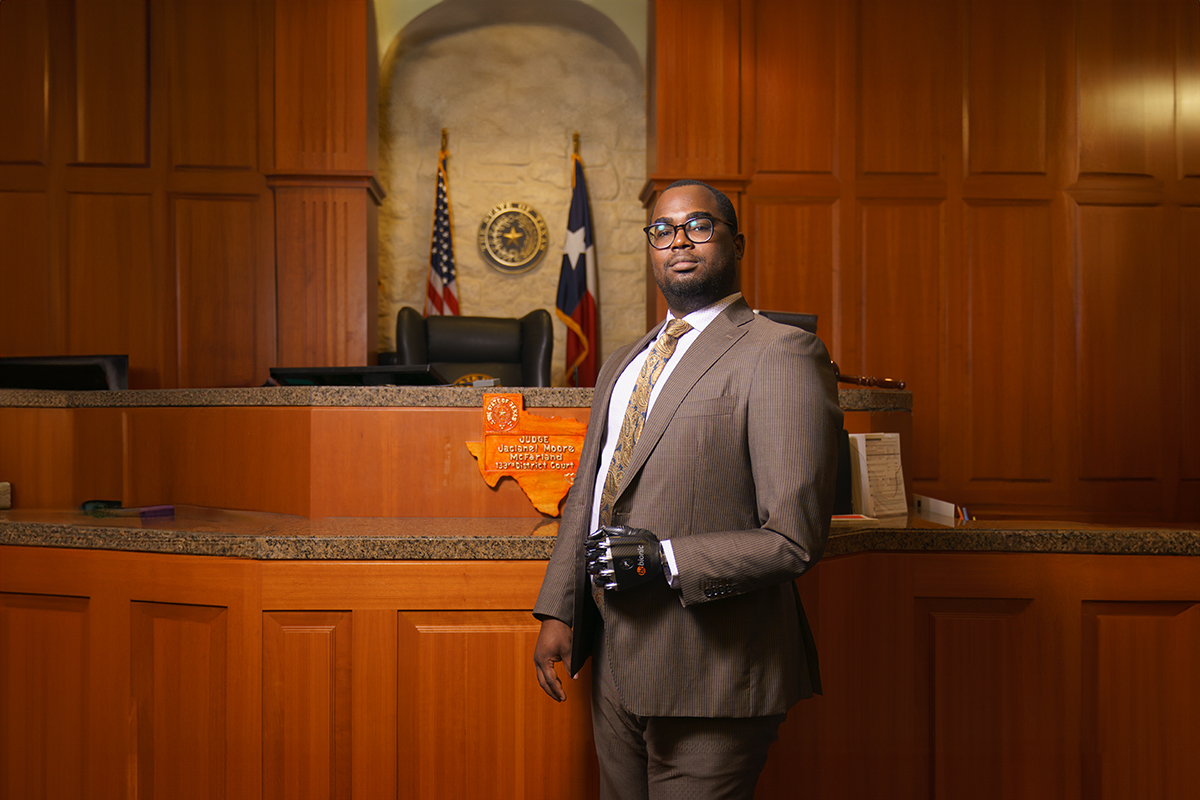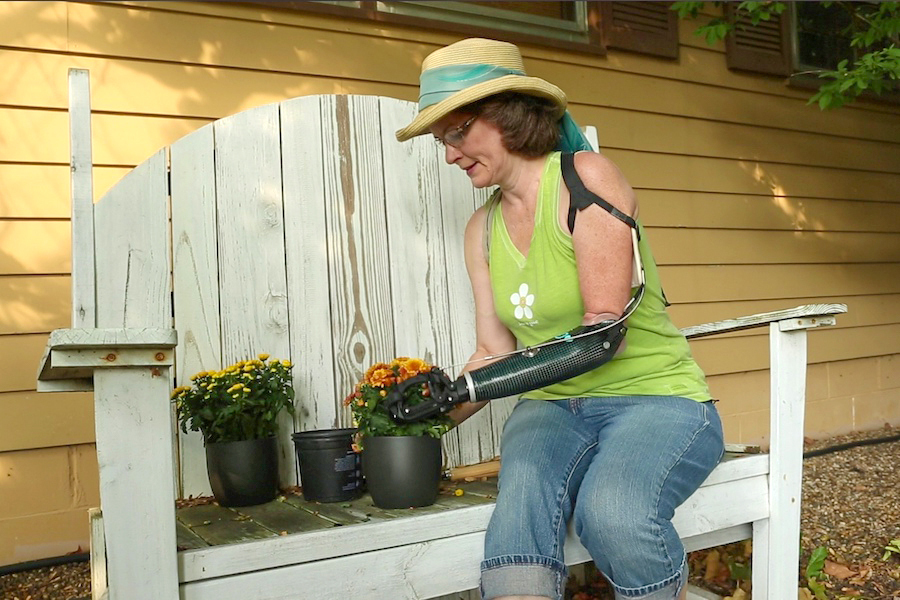Losing an upper limb can make you question your independence. You might wonder, “Will I be able to feed myself? Dress myself? Drive myself?” That last one — being able to drive — is a big measure of freedom for most of us.
While it’s true that new amputees usually need some healing time before they’re ready to get behind the wheel, most people, including bilateral amputees, will eventually get back to the freedom of driving.
In this article, we’ll offer tips, videos and other resources to help arm amputees and prosthesis users return to driving cars or trucks, ATVs, motorcycles and other powered vehicles. Your prosthetist and clinical therapy specialist are also excellent sources of information about when and how to drive again after upper limb loss.
Driving Basics for Cars and Trucks
There are several ways that people with limb loss or limb difference approach driving. Some rely exclusively on their sound hand to drive. Those who wear a prosthesis on one arm may use it to assist their other hand with bracing the steering wheel or activating the blinker and other controls. Bilateral amputees may wear a prosthesis on one or both sides in order to be able to hold and turn the steering wheel and operate various controls.
In the video below, bilateral amputee Jason Koger demonstrates how he uses his body-powered prosthetic arms when driving his truck every day.
Regardless of how you drive or plan to drive, you’ll need to have a valid driver license before you get behind the wheel. Every state has different requirements for getting your first driver's license or renewing your current license. It’s your responsibility to contact your state’s department of motor vehicles (DMV) to find out if there are driver license restrictions for people with upper limb loss.
There are a range of adaptive tools and techniques designed for drivers who use a prosthesis or drive with one hand. These include devices that can make it easier to steer, like the sure-grip ring spinner knob or the interchangeable sure-grip single pin spinner knob.
The more advanced wireless control knobs include buttons that activate headlights, blinkers, windshield wipers and more, and are especially helpful for one-handed driving. To give you a better idea of how it works, take a look at this video.
Here are some suggestions from Gerry Kinney, a bilateral below-elbow amputee who’s happy to be using his prosthetic arm — one myoelectric and one body-powered — to be able to drive again:
Some states require people with specific medical conditions to meet with a DMV examiner to determine if restrictions should be added to a driver's license, or if the person should be required to take and pass a road test to keep their license. For example, in some states, if you perform a driving test using assistive equipment like a spinner knob on the steering wheel, a restriction may be placed on your license that indicates you always have to drive with a spinner knob.
In most states, people who drive with one hand are expected to take or retake the same road test as any other driver. Congenital shoulder level amputee Madelyn Hubbs talks about her experiences with one-handed driving and also shares a funny story in this video.
Our Arm Dynamics clinical team recommends that new patients who have no experience with driving a car or truck with a prosthesis or with one hand should contact a certified driver rehabilitation specialist in their area. The American Occupational Therapy Association’s searchable national database makes it easy to find a specialist.
If you have multiple limb amputations, you may need to consider having your vehicle modified. Certified driver rehabilitation specialists can direct you to a qualified vehicle modification service. Mobility Works offers adaptive equipment and vehicle modification services at multiple locations across the country. You can find other options with an online search.
ATVs, Motorcycles and More
ATVs are popular for recreation and are commonly used on the job for farming, ranching, logging and other types of outdoor work. If you’d like to be able to drive an ATV with an upper limb prosthesis, first check out the laws for ATV use in your state on this free national database.
There are modifications that apply to both ATVs and motorcycles that can make it easier for you to drive if you have upper limb loss or absence. It's your responsibility to contact your state's DMV and ensure that any modifications made to your vehicle meet state requirements. Always rely on trained and experienced mechanics or a licensed vehicle modification shop to make these types of changes:
- Adding a lever system that combines front and rear brakes. Several manufacturers offer these systems that allow a one-handed driver to regulate how much braking power goes to the front and rear brakes with a single lever.
- Relocating the brakes or clutch levers to enable the driver to activate controls with their feet.
- Adding a foot-operated steering plate, which may be an alternative to a steering wheel on some types of vehicles.
With a little practice, a body-powered or activity-specific prosthesis can work pretty well for driving an ATV. Our friend Jason uses his body-powered prostheses with hooks to drive around his family’s farm in Kentucky.
If you’re planning on more rugged, off-road use, TRS Prosthetics offers Jaws (photo below), a heavy-duty terminal device that provides a stronger grip. JAWS is used by some upper limb patients to drive a snowmobile, a WaveRunner or a Sea-Doo.
Motorcycle enthusiasts are passionate about getting around on two wheels. If you’re interested in driving a motorcycle, it’s your responsibility to contact your state’s department of motor vehicles or transportation and find out about motorcycle licensing requirements, laws and safety.
Driving a motorcycle may be easier with a prosthetic attachment that helps restore your ability to grip the handlebars on the amputated side. The most basic device you can use is a body-powered hook. Another activity-specific option is the Criterium Pivot by TRS Prosthetics, a hard plastic attachment that wraps around the handlebar.
The Mert Lawwill Device (MLD) is a prosthetic hand attachment that's used for driving motorcycles, mountain bikes and snowmobiles. Our Arm Dynamics clinical teams have experience with integrating the MLD into our patients' prostheses.
Check out this video of the MLD in action on a motocross track.
The Grip Ace Digital Switch Kit is a unique option you might like to learn about, especially if you don’t wear a prosthesis on your amputated side. This system allows you to move all of the motorcycle’s switching functions to one location, such as the throttle side of the handlebars, where they can be controlled by one hand. Grip Ace has made it possible for some one-armed drivers to be licensed to drive a motorcycle.
Riding lawn mowers are another type of vehicle that you may be interested in driving. If you’re using a body-powered prosthesis or driving one-handed, you could add an inexpensive spinner ring or knob to your steering wheel for a better grip and easier turns. If you drive a zero-turn mower, a body-powered prosthesis works well. Here’s an example:
Whether you decide to use an upper limb prosthesis, have your vehicle modified by a trained mechanic, or add a simple device like a spinner knob, it’s important to proceed with caution until you feel comfortable and confident with your new approach to driving. It may even feel like you're learning how to drive all over again!
If you have questions about any of the driving tips or upper limb prostheses we mentioned, please complete the form below and write your questions in the comments box. You can also use the comments box to share driving tips or vehicle modifications we might have left out.
What are other activities you'd like to get back to? Fishing? Playing an instrument? Video gaming? We have many blog articles that feature our patients who have returned to their former enjoyable tasks.
As an upper limb amputee or prosthesis user, your real-world experiences, suggestions and concerns are something we always want to hear more about!
For more information, see related articles and resources here:









%20President%20and%20Senior%20Clinical%20Director.jpg?width=600&height=600&name=John%20M.%20Miguelez%2c%20CP%2c%20FAAOP(D)%20President%20and%20Senior%20Clinical%20Director.jpg)










No Comments Yet
Let us know what you think